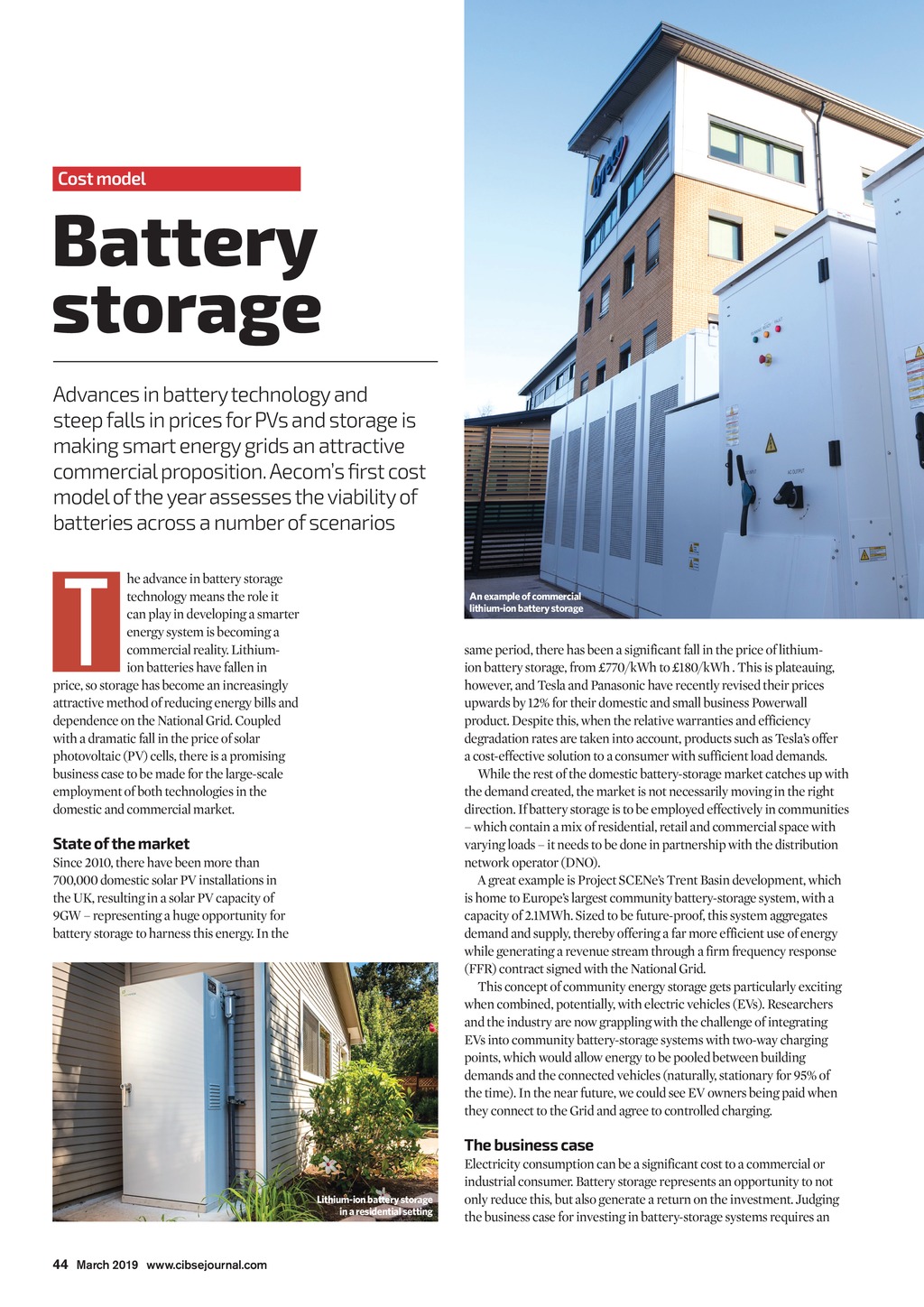




Cost model Battery storage Advances in battery technology and steep falls in prices for PVs and storage is making smart energy grids an attractive commercial proposition. Aecoms first cost model of the year assesses the viability of batteries across a number of scenarios T he advance in battery storage technology means the role it can play in developing a smarter energy system is becoming a commercial reality. Lithiumion batteries have fallen in price, so storage has become an increasingly attractive method of reducing energy bills and dependence on the National Grid. Coupled with a dramatic fall in the price of solar photovoltaic (PV) cells, there is a promising business case to be made for the large-scale employment of both technologies in the domestic and commercial market. An example of commercial lithium-ion battery storage same period, there has been a significant fall in the price of lithiumion battery storage, from 770/kWh to 180/kWh . This is plateauing, however, and Tesla and Panasonic have recently revised their prices upwards by 12% for their domestic and small business Powerwall product. Despite this, when the relative warranties and efficiency degradation rates are taken into account, products such as Teslas offer acost-effective solution to a consumer with sufficient load demands. While the rest of the domestic battery-storage market catches up with the demand created, the market is not necessarily moving in the right direction. If battery storage is to be employed effectively in communities which contain a mix of residential, retail and commercial space with varying loads it needs to be done in partnership with the distribution network operator (DNO). A great example is Project SCENes Trent Basin development, which is home to Europes largest community battery-storage system, with a capacity of 2.1MWh. Sized to be future-proof, this system aggregates demand and supply, thereby offering a far more efficient use of energy while generating a revenue stream through a firm frequency response (FFR) contract signed with the National Grid. This concept of community energy storage gets particularly exciting when combined, potentially, with electric vehicles (EVs). Researchers and the industry are now grappling with the challenge of integrating EVs into community battery-storage systems with two-way charging points, which would allow energy to be pooled between building demands and the connected vehicles (naturally, stationary for 95% of the time). In the near future, we could see EV owners being paid when they connect to the Grid and agree to controlled charging. State of the market Since 2010, there have been more than 700,000 domestic solar PV installations in the UK, resulting in a solar PV capacity of 9GW representing a huge opportunity for battery storage to harness this energy. In the The business case Lithium-ion battery storage in a residential setting Electricity consumption can be a significant cost to a commercial or industrial consumer. Battery storage represents an opportunity to not only reduce this, but also generate a return on the investment. Judging the business case for investing in battery-storage systems requires an 44 March 2019 www.cibsejournal.com CIBSE Mar19 pp44-46 Cost Model.indd 44 22/02/2019 16:41